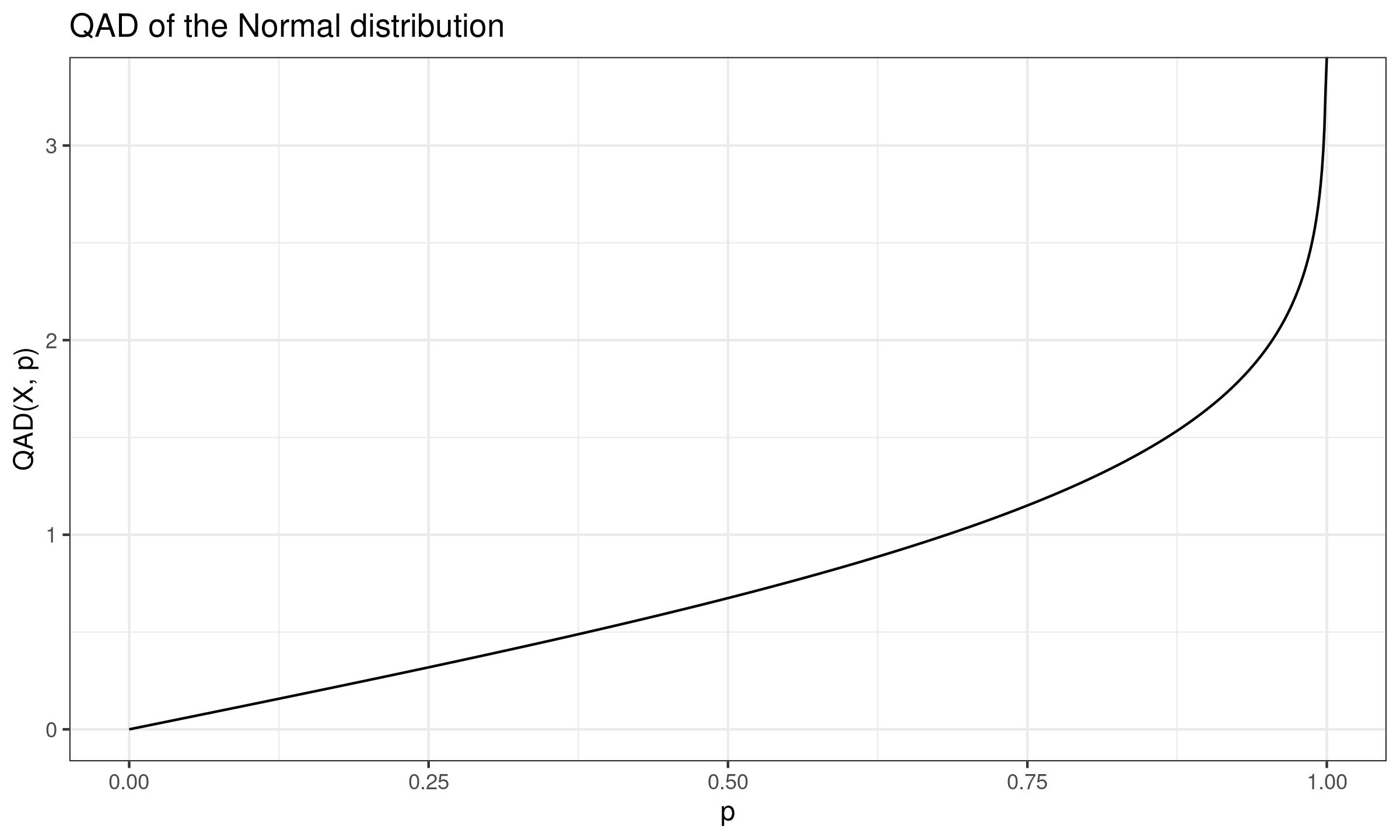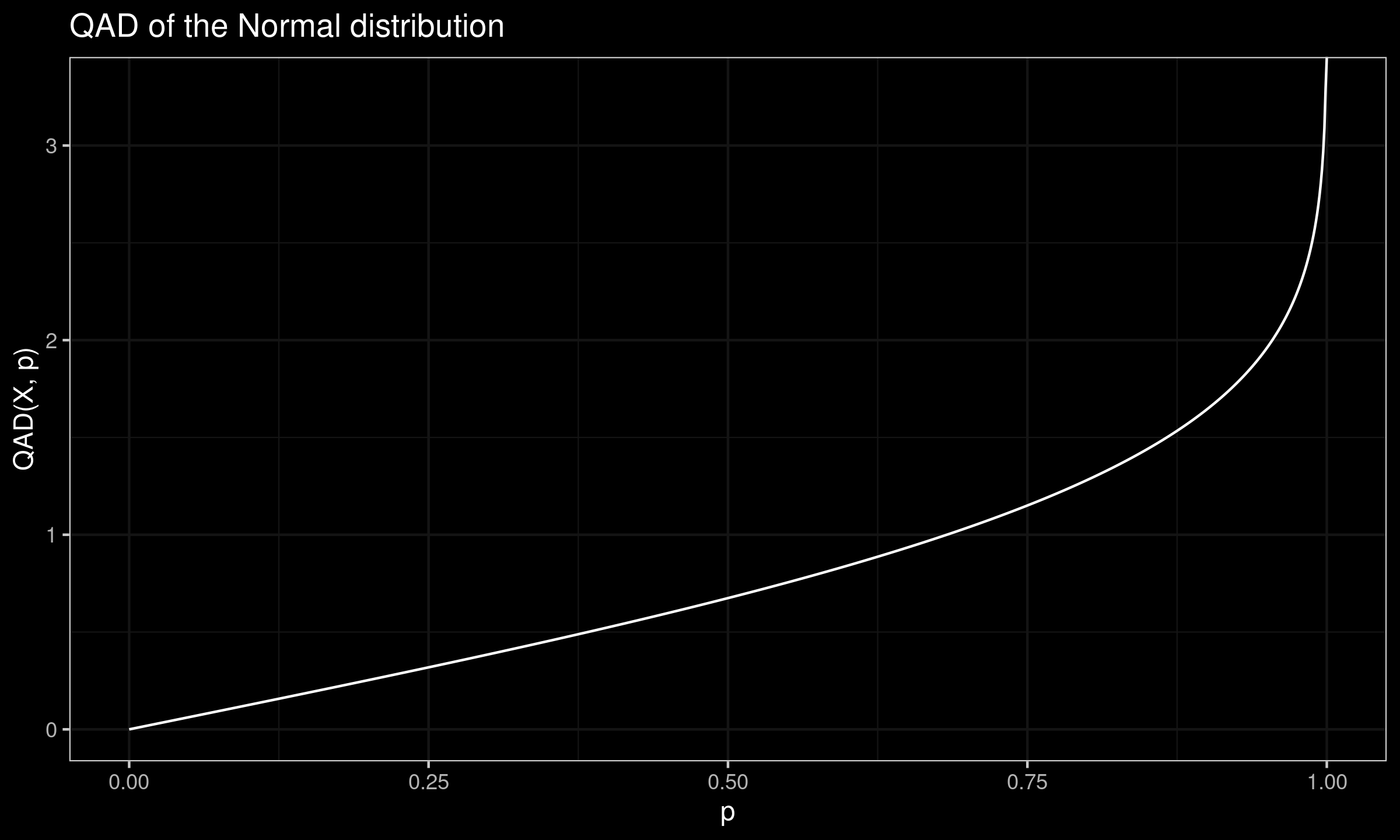Quantile absolute deviation of the Normal distribution
The below text contains an intermediate snapshot of the research and is preserved for historical purposes.
In this post, we derive the exact equation for the quantile absolute deviation around the median of the Normal distribution.
Preparation
We consider the quantile absolute deviation around the median defined as follows:
$$ \newcommand{\E}{\mathbb{E}} \newcommand{\PR}{\mathbb{P}} \newcommand{\Q}{\operatorname{Q}} \newcommand{\QAD}{\operatorname{QAD}} \newcommand{\median}{\operatorname{median}} \QAD(X, p) = \Q(|X - \median(X)|, p), $$where $\Q$ is a quantile estimator.
We are looking for the asymptotic value of $\QAD(X, p)$. For simplification, we denote it by $v_p$:
$$ v_p = \lim_{n \to \infty} \E[\Q(|X-M|, p)], $$where $M$ is the true median of the distribution.
By the definition of quantiles, this can be rewritten as:
$$ \PR(|X_1 - M| < v_p) = p, $$which is the same as
$$ \PR(-v_p < X_1 - M < v_p) = p. $$Hence,
$$ \PR(M - v_p < X_1 < M + v_p) = p. $$If $F$ is the CDF of the considered distribution, the above equality can be rewritten as
$$ F(M + v_p) - F(M - v_p) = p. \tag{1} $$Normal distribution
We consider the standard normal distribution $\mathcal{N}(0, 1)$ given by the CDF $F(x)=\Phi(x)$ with the median value $M=0$. From (1), we have:
$$ \Phi(v_p) - \Phi(-v_p) = p. $$Using $\Phi(-v_p) = 1 - \Phi(v_p)$, we get:
$$ \Phi(v_p) = \frac{p+1}{2}, $$which is the same as
$$ v_p = \Phi^{-1} \Big( \frac{p+1}{2} \Big). $$Thus, if $X \sim \mathcal{N}(0, 1)$,
$$ \lim_{n \to \infty} \E[\QAD(X, p)] = \Phi^{-1} \Big( \frac{p+1}{2} \Big). $$Here is the corresponding plot:

